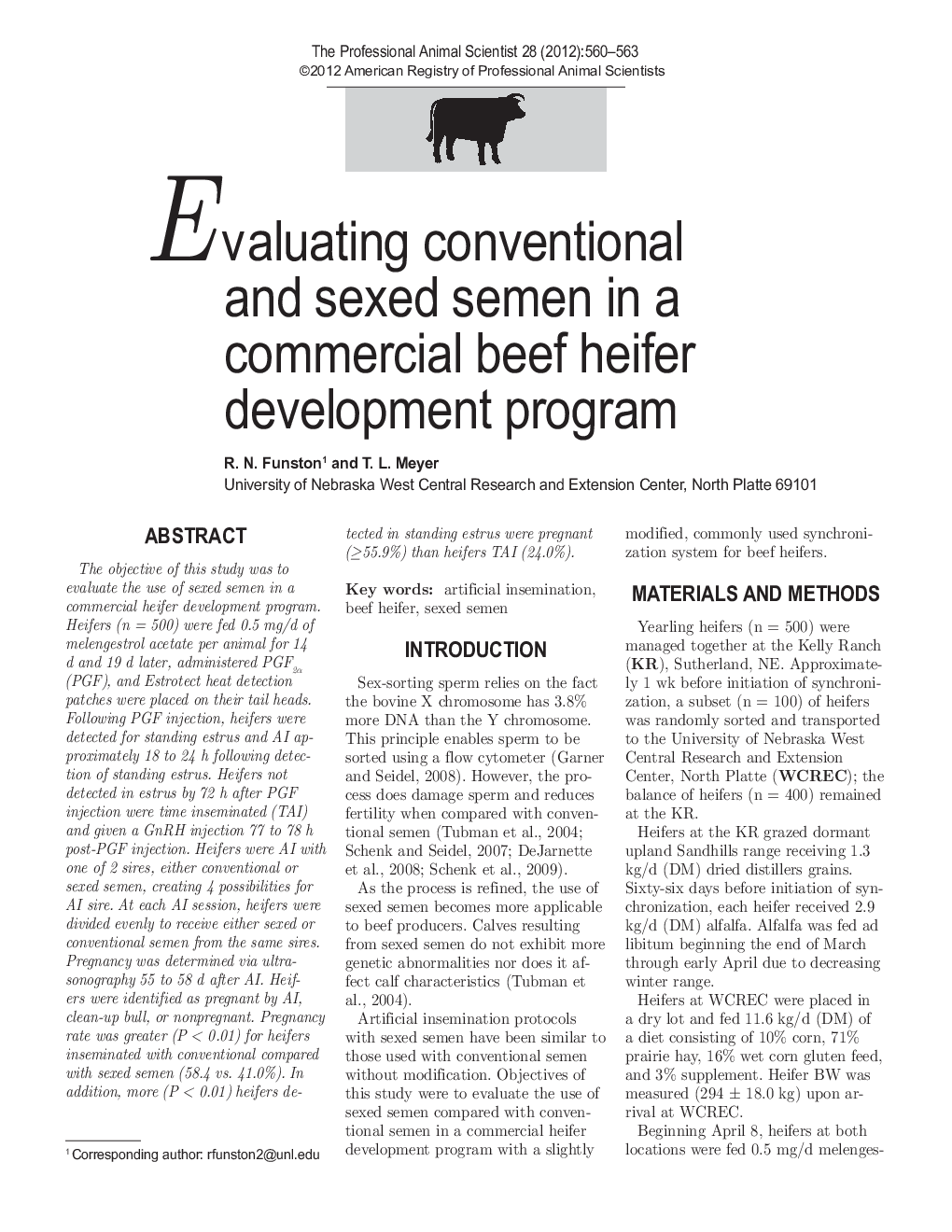| Article ID | Journal | Published Year | Pages | File Type |
|---|---|---|---|---|
| 2453917 | The Professional Animal Scientist | 2012 | 4 Pages |
Abstract
The objective of this study was to evaluate the use of sexed semen in a commercial heifer development program. Heifers (n = 500) were fed 0.5 mg/d of melengestrol acetate per animal for 14 d and 19 d later, administered PGE2α (PGF), and Estrotect heat detection patches were placed on their tail heads. Following PGF injection, heifers were detected for standing estrus and AI approximately 18 to 24 h following detection of standing estrus. Heifers not detected in estrus by 72 h after PGF injection were time inseminated (TAI) and given a GnRH injection 77 to 78 h post-PGF injection. Heifers were AI with one of 2 sires, either conventional or sexed semen, creating 4 possibilities for AI sire. At each AI session, heifers were divided evenly to receive either sexed or conventional semen from the same sires. Pregnancy was determined via ultrasonography 55 to 58 d after AI. Heifers were identified as pregnant by AI, clean-up bull, or nonpregnant. Pregnancy rate was greater (P < 0.01) for heifers inseminated with conventional compared with sexed semen (58.4 vs. 41.0%). In addition, more (P < 0.01) heifers detected in standing estrus were pregnant (â¥Â 55.9%) than heifers TAI (24.0%).
Related Topics
Life Sciences
Agricultural and Biological Sciences
Animal Science and Zoology
Authors
R.N. Funston, T.L. Meyer,
